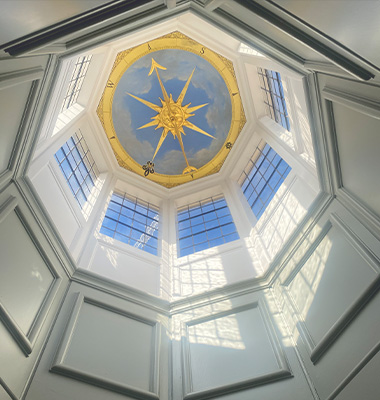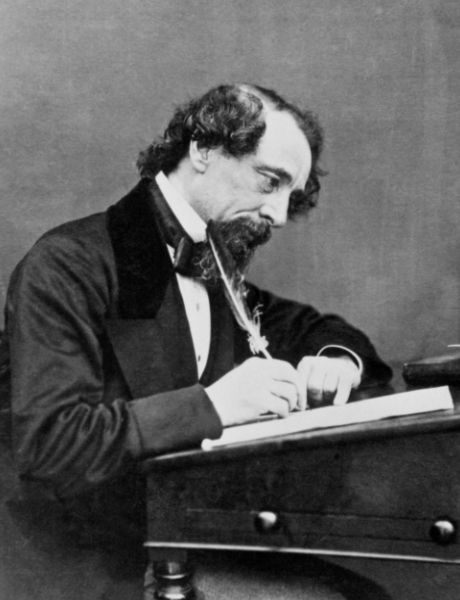History
INSIGHTS INTO THE HISTORY OF NEWCASTLE.
Built circa 1670, Alderman Fenwick’s House has a rich architectural history and stands today as one of the rarest surviving examples of a Merchant’s House.
The unique interior consists of elements of the original layout, together with alterations from the 17th and 18th century to modern day renovation. The walls of Alderman Fenwick’s House hold many stories and insights into the History of Newcastle.
The Location
The first known documentary reference of Pilgrim Street dates back to 1230, with evidence that houses along this route were established early in the town’s history.
The Pilgrim Street gate (13th – 14th Century) was constructed as part of the original town walls providing defence to frequent invasion threats during hostilities with Scotland.
In the first published description of Newcastle, William Grey noted Pilgrim Street to be…
“The longest and fairest street in the town”
Furthermore, Newcastle’s famous Grey Street was carved from the original medieval plots of Pilgrim Street explaining the close connection between the two that remains today.

Origins
The first name linked as an inhabitant of Alderman Fenwick’s House is Thomas Winship, a member of the Tanner’s Company of Newcastle. Winship’s daughter, Sarah Fenwick would inherit the house from her father after his death in 1695.
Sarah’s husband, merchant Nicholas Fenwick, carried out vast improvement works to the house around 1700, with the house first appearing under the name ‘Alderman Fenwick’ in James Corbridge’s 1723 Map of Newcastle. The house remained in ownership of the Fenwick family until 1753.
Historic testimony describes Alderman Fenwick’s House as a…
‘stylish residence – fit for an important family’



The Queen's Head Inn
1781 - 1883
In 1781, the house was purchased by Charles Turner to be converted and renamed the Queens Head Inn.
The name was that of his previous inn further down Pilgrim Street, which in exchange became the Old Queen’s Head.
The Queens Head was one of several large inns in Newcastle, but it was undoubtedly the favourite for important receptions, banquets and gatherings.
In the 1850s, writer Charles Dickens was a guest at the inn whilst visiting the City to give readings and performances of his works.
Charles Turner continued to develop his new acquisition, enlarging and improving accommodation and beginning the period of No 98 and No 100 Pilgrim Street together as conjoined buildings.
The building continued as a coaching inn under various new ownerships until 1883.




The Liberal Club
1883 - 1962
The Newcastle upon Tyne Liberal Club leased the building moving from their previous premises on Grey Street. The Club utilised the Great Room as their Dining Hall to host their many dinners and lavish events.
In 1909, then MP Winston Churchill, attended the Annual Luncheon for the Club upon his visit to Newcastle.
Remaining in the Club’s hands through the First World War, there are no records of significant changes to the building during this time – although urgent repairs were required.
The Second World War had more of an effect on the building, with fire-watching organised by neighbouring premises and hospitality arranged for Polish and Dutch servicemen.
The affectionately named ‘Slump’ – a memorable feature of the Liberal Club layout, was let as offices for the first time in 1959 to produce income.
Despite the club’s efforts to increase income and membership, finances continued to deteriorate. Therefore, the Liberal Club had no option but to give up the house and move premises in 1962.
Restoration 1974 - 1997
During the unoccupied period following the departure of the Liberal Club, demolition and redevelopment options were considered due to severe deterioration. Fortunately, these permissions were never granted.
Alderman Fenwick’s House remained uninhabited until purchased by Newcastle City Council in 1974 who actively began the search for a developer.
In 1984, local architectural heritage charity Tyne and Wear Building Preservation Trust were invited by the Council to undertake the restoration of Alderman Fenwick’s House.
Grants were received from the City Council and the Historic Buildings Council and the first phase of repairs began. The contract for the final phase of work was approved in 1996 and completed in 1997, with the method of restoration being to repair rather than to replace.
This approach protected many original features of the building which can still be seen today:



The main areas of restoration included the transforming the ground floor entrance hall to its original layout, after it had been significantly altered during its time as a coaching inn.
The Main Staircase was near a total collapse and was therefore strengthened and redesigned at ground floor level, recreating the original form.
A new escape stair towards the rear of No. 100 was added as adequate means of a fire escape. The roof was adapted to feature a Rooftop Cupola, with a painted sky scene and wind vane – after onsite evidence suggested it was an original feature of the building.
The Great Room was substantiality transformed having deteriorated through neglect. The ceiling plaster was repaired, and period furnishings added allowing the room was restored to its former glory.
The existing links between No. 98 and No. 100 Pilgrim Street were restored to their original form, with open brick passageways and an additional link through to the chimneystack. The hugely successful restoration by Tyne and Wear Building Preservation Trust and ongoing upgrades provided by new owners, Central Space – secures a long-term future for Alderman Fenwick’s House.
The building today continues to thrive as Boutique Office and Events Space, with our history celebrated and protected for new generations to experience.
Famous Faces
Winston Churchill
Whilst still an MP, Winston Churchill attended the Annual Luncheon in our Great Room (formerly the Liberal Club Dining Room).
Below: Sir Winston Churchill and a copy of the original invite from 1909.



Charles Dickens
In the early 1850s, Charles Dickens organised a touring ensemble and travelled the country giving readings and performances across the country. During this time he visited Newcastle and stayed in Alderman Fenwick’s House as a guest of the then Queens Head Hotel. He described his experience in Newcastle with the following: